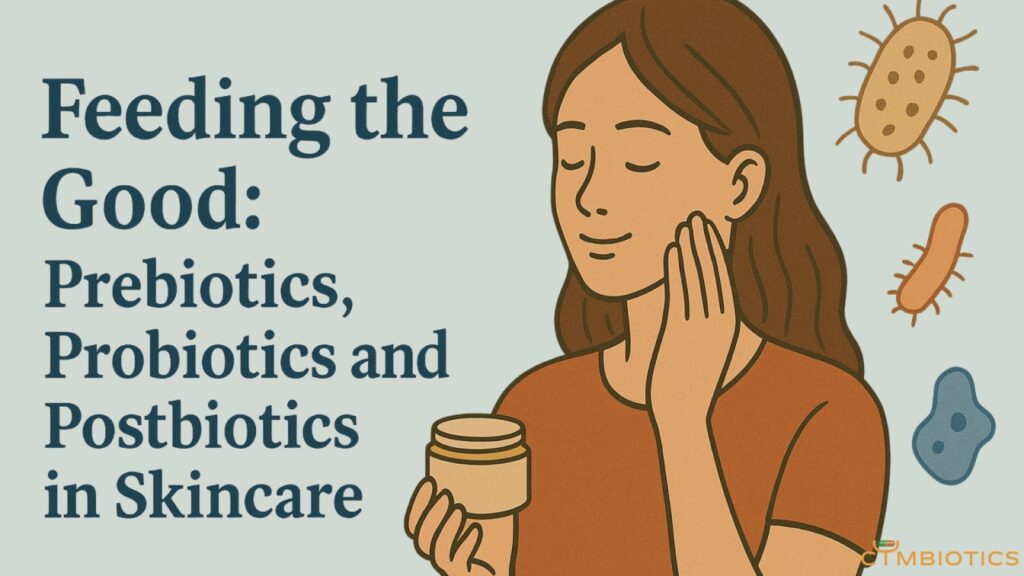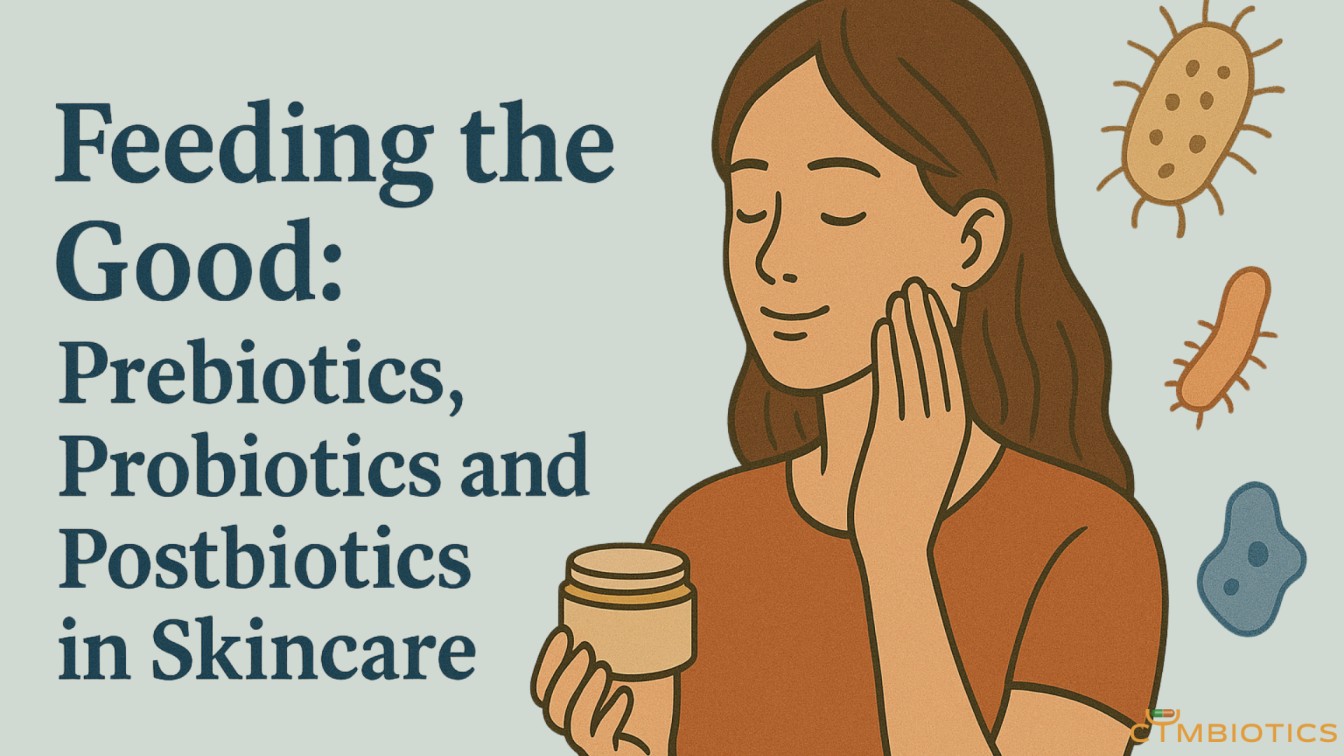The skin is more than a barrier, it is a vibrant ecosystem home to a diverse microbiome of bacteria, fungi, and viruses. This community acts as an invisible shield, supporting immunity, hydration, and defense against pathogens. When balanced, it contributes to clear, resilient skin. When disrupted, or in “dysbiosis,” it may drive conditions like acne, eczema, or accelerated aging.
One of the most promising strategies in modern dermatology is supporting microbial balance with biotics prebiotics, probiotics, and postbiotics. Each works in a unique way to “feed the good,” supporting microbial diversity and harmony.
Prebiotics: Fuel for Friendly Flora
Prebiotics are non-digestible compounds that serve as nourishment for beneficial microbes. Applied topically, they selectively encourage the growth of commensal organisms while discouraging opportunistic pathogens. By strengthening the “good” microbes, prebiotics help maintain a stable microbiome.
Clinical research suggests prebiotics can reduce colonization of harmful bacteria, regulate pH, and improve barrier recovery. They do not add new organisms but instead shape the environment to favor microbial allies already living on the skin.
Probiotics: Live Allies on the Skin
Probiotics involve the topical application of live, beneficial microorganisms. These microbes can compete with pathogens, produce antimicrobial peptides, and influence immune pathways. Emerging studies show that probiotics may help reduce acne lesions, soothe atopic dermatitis, and enhance overall barrier function.
Challenges remain: live microbes are delicate, requiring stabilization and protection to survive formulation and reach their target. Yet, the potential is significant using living organisms as direct allies in skin defense is an exciting frontier.
Postbiotics: Bioactive Metabolites for Skin Health
Postbiotics are not live microbes, but the beneficial compounds they produce, such as peptides, short-chain fatty acids, or antioxidant molecules. These metabolites can reduce inflammation, support lipid synthesis, and enhance skin resilience.
Unlike probiotics, postbiotics are stable, making them easier to formulate into products. They deliver many of the same benefits improved barrier repair, reduced sensitivity, and anti-aging effects without the risks associated with live bacterial application.
The Science of Microbiome-Supportive Care
Together, prebiotics, probiotics, and postbiotics offer complementary strategies. Prebiotics create a nourishing environment, probiotics add beneficial microbes, and postbiotics supply active signals that strengthen skin health.
Scientific literature increasingly highlights that balanced microbial diversity is essential for preventing flare-ups of conditions such as eczema and acne. Rather than simply eliminating microbes with harsh antimicrobials, the new focus is on cultivating balance, supporting a living shield that naturally protects skin.
Cymbiotics’ Perspective: Science in Service of Balance
At Cymbiotics, we view skin not just as a surface but as a living ecosystem. Supporting its microbiome means advancing dermatological science in ways that strengthen barriers while respecting microbial balance.
Our mission is to enhance health and well-being through continuous innovation and science-backed formulations. By developing advanced dermal technologies such as Cetosomes™ and FADD™ (Fast Acting Dermal Delivery), Cymbiotics creates delivery systems that optimize hydration, enhance absorption, and maintain barrier integrity, without disrupting the skin’s microbial allies.
As microbiome research grows, Cymbiotics continues to explore how advanced delivery and formulation strategies can integrate prebiotic, probiotic, and postbiotic approaches to restore balance and resilience in skin health.
References
- “Postbiotics and Their Health Modulatory Biomolecules” – E. Scott et al., PMC, 2022.
- “Microbiome and Postbiotics in Skin Health” – S. Prajapati et al., MDPI / PMC, 2025.
- “Multi-omic approach to decipher the impact of skincare products with pre/postbiotics on skin microbiome” – Li et al., Frontiers in Medicine, 2023.
- “Production, Formulation, and Application of Postbiotics in the Treatment of Skin Conditions” – da Silva Vale et al., MDPI, 2023.



